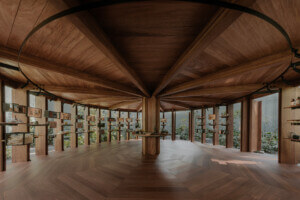Soon after Mexico City was designated to host the 1968 Olympics, the idea of a year-long cultural program emerged—one which would come to shape the ethos of the games for years to come. Hinting at the Greek Olympics’ legacy, the Mexican Cultural Olympiad would deploy 20 cultural events and projects throughout the year while promoting a modern discourse of peace at a time when the cold war profoundly divided the world.
As part of the program, the Polish-born, Mexican artist and architect Mathias Goeritz (who coined the concept of “Emotional Architecture” with Luis Barragán) proposed an ambitious public sculptures route integrated with the city as a way to respond to its rapid urbanization. La Ruta de la Amistad (or the Route of Friendship), as it was named, would offer new ways of navigating the capital while making art available to the masses and celebrating international dialogue. The proposal was received with great enthusiasm from the chair of the Mexican Olympic Organizing Committee, the influential architect Pedro Ramírez Vázquez.
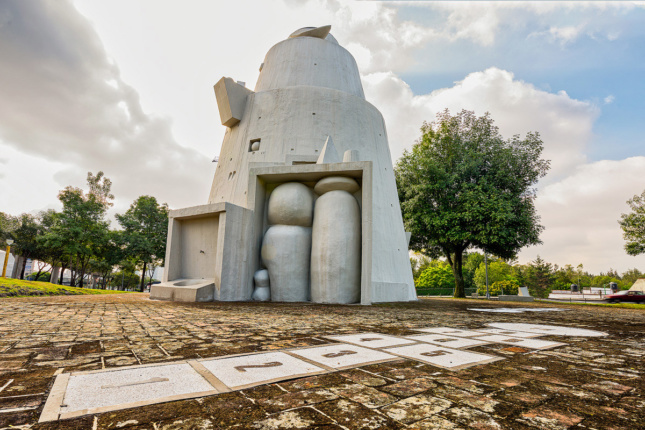
In the lead-up to the Olympics, a total of 22 sculptures were commissioned from 19 artists and architects, including the Uruguayan artist Gonzalo Fonseca, the French artist Olivier Seguin, the American sculptor Alexander Calder, and the Mexican sculptor Ángela Gurría. Goeritz’s curatorial brief was simple: All sculptures should be abstract, of monumental scale, and use concrete as their main material. The project would become the largest sculptural thoroughfare in the world, connecting Olympics venues across a distance of 11 miles—and a great source of pride for Mexico.
However, a week and a half before the official start of the games, the route, like the rest of the Cultural Olympiad, was obscured by the Massacre of Tlatelolco, in which the Mexican military and the police killed at least 300 students and civilians protesting government repression and corruption. Politicians, used to controlling every aspect of Mexican society, showed little patience for the demonstrations, which they feared would damage their cherished reputation as Olympics hosts. For the government, the games had become a platform to project its progressive, modern ideals and to challenge the perception that it was a developing country. Fifty years on, the sculptures stand neglected, in a state of near decay, like the remnants of a broken dream.
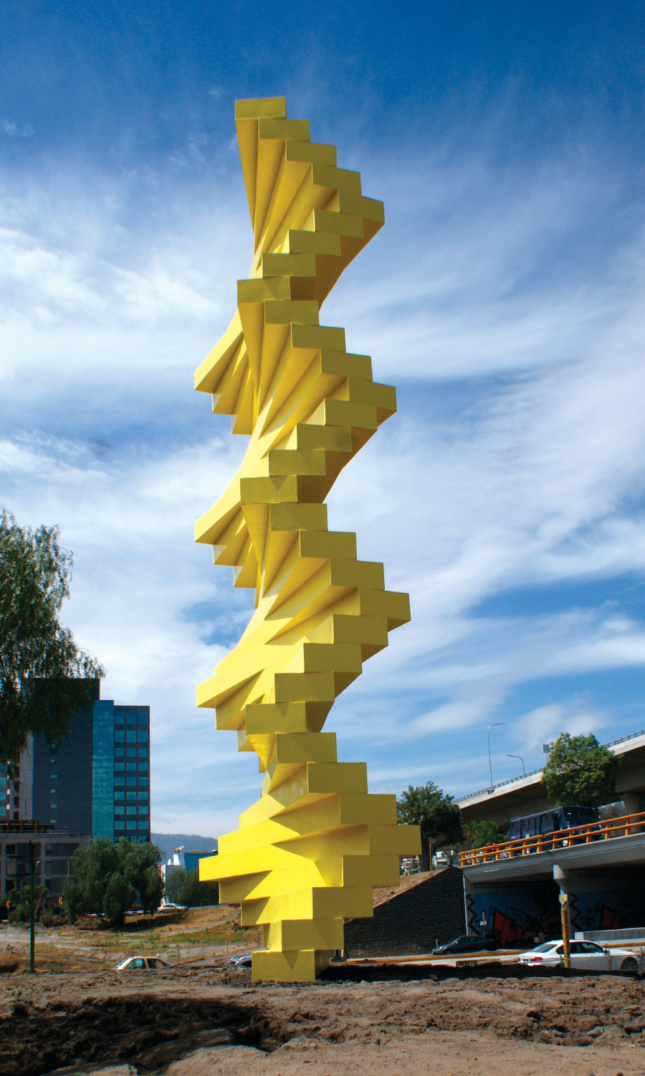
“In Mexico, the route isn’t seen as something important. Not for the people, nor the government,” lamented Luis Javier de la Torre, president of Patronato Ruta de la Amistad, as he toured us around its principal site, now overshadowed by the infamous Periferico, a dystopic, elevated highway crossing the city. The organization he cofounded in 1994 with Javier Ramírez Campuzano (the son of Ramírez Vázquez) is in charge of conserving the sculptures and promoting their legacy. Prior to this, the route was largely abandoned and subjected to vandalism. The Patronato was able to restore and relocate a number of pieces at risk of deterioration, creating a centralized location composed of 13 works between 2011 and 2013.
To mark the Route’s 50th anniversary, the Patronato is launching a number of activities with partner organizations on a shoestring budget. The Museo del Palacio de Bellas Artes is opening an exhibition about it this October, scheduled to coincide with Design Week Mexico (October 10 to 15). Meanwhile, the official program of World Design Capital Mexico City 2018 has incorporated educational projects to bring awareness to the route. “Its values live on,” argued de la Torre.
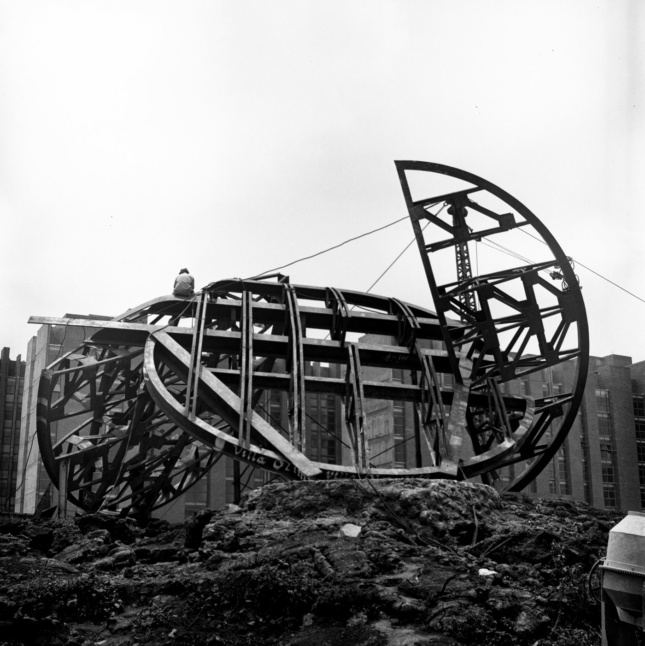
So why does the route fail to receive the public interest and support it deserves? According to de la Torre, a combination of a conflicted sense of national identity, a lack of understanding, and the collective trauma of 1968 are responsible. “We don’t have a proper identity as a country,” he explained, nodding to Mexican poet Octavio Paz’s The Labyrinth of Solitude, a series of essays that discusses the existential tension between colonial and indigenous cultures in the country. “No one believed that as a society we were capable of running the Olympics in ways that would be replicated by others around the world,” he continued.
Most important, the political turmoil associated with 1968 overbearingly shaped the country’s consciousness of that moment. “This is where the dream broke,” said Mexican architect Frida Escobedo, this year’s Serpentine Pavilion designer, when we visited her studio. At the recent Biennale d’Architecture d’Orléans, Escobedo revisited the Ruta de la Amistad by presenting a reproduction of the metal frame behind the sculpture by Olivier Seguin. The precarious-looking, welded steel structure—now permanently installed at Le Parc Floral de La Source in Orléans, France—was inspired by an installation shot of the original work, which the architect discovered while visiting the archives of the FRAC Centre in France. “The picture presented the reality of 1968,” Escobedo recounted, reflecting on the ambiguous promise of modernism in the construction of Mexico’s national identity. “It’s all a spectacle.”
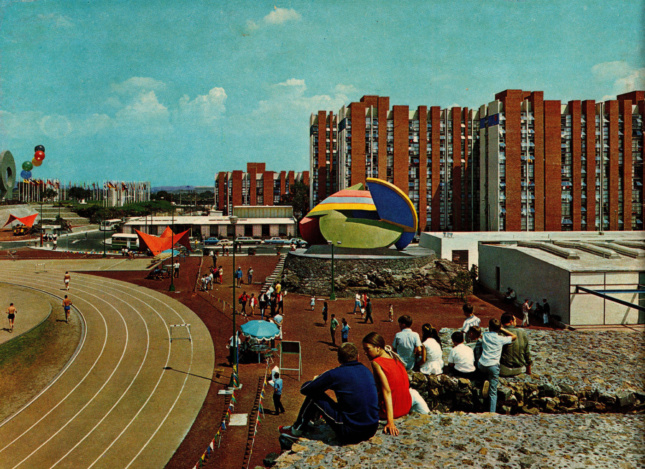
“We haven’t been able to separate things,” explained de la Torre of the troubled legacy of 1968. “I think that now, there is an opportunity for both narratives to coexist.” But should the Olympics’ cultural legacy really be separated from its political context? Before the army opened fire at the crowd on October 2, 1968, anti-government protesters were chanting, “¡No queremos olimpiadas, queremos revolución!” (“We don’t want the Olympics, we want a revolution!”)









